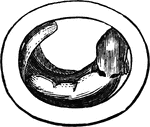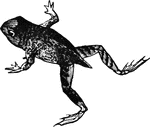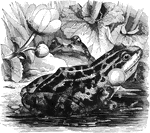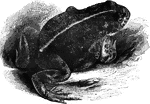Clipart tagged: ‘anura’

Embryo
"Figure 1 represents the embryo as it appears several days after the egg is deposited." — Goodrich.…

Form of the embryo
"Figure 2 gives an outline of its form; the arrows at the side of the head show the currents of water…

Frog with tail
Nearing the end of its development, a gradually shrinking tail is all that remains of the tadpole.

Edible frog
"It is rather larger than the common frog, and its nocturnal croakings are so loud and disagreeable,…
Newly hatched tadpole
"Figure 5 shows the form of the tadpole when first hatched, which usually takes place about four weeks…

Common European toad
"It is a harmless animal, though its ungainly appearance has made it the subject of general aversion."…

Natter-jack toad
"Resembles the common toad of Europe in appearance: there are also other foreign species, among which…

Squirrel Tree-toad
"Is of a brownish or light ash-color, and is found under logs and the bark of decayed trees." — Goodrich,…

Surinam toad
"At the breeding season the back of the female exhbits a number of small pits; into these pits the male…





